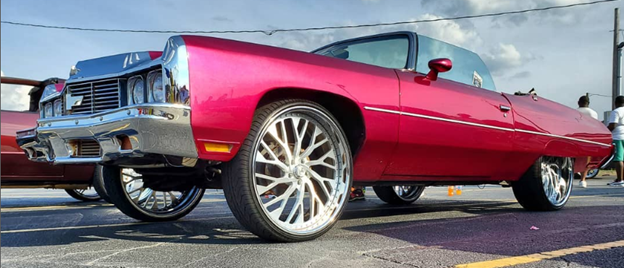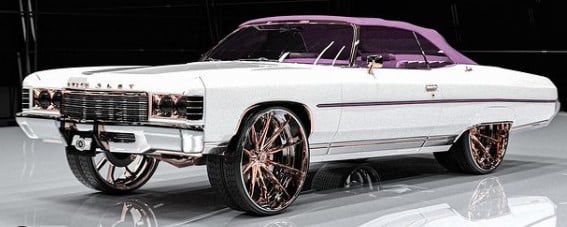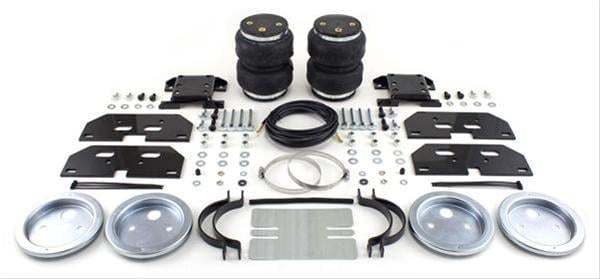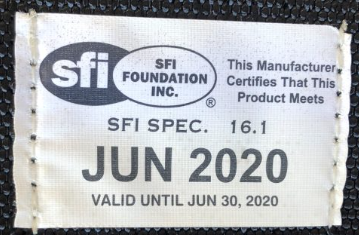
As a driver's primary means of controlling their vehicle, the importance of a properly functioning steering wheel cannot be understated.
If you're experiencing issues with your steering, like being harder to turn, pulling to one side, or making odd noises, you'll want to address it before it results in further damage or causes an accident. Problems often stem from within the steering or suspension systems, usually somewhere between the steering wheel and the wheels.
Depending on the cause, you may need to change the power steering fluid, replace the steering belt, or get an alignment, for example. To ensure you're performing the right fix, you should first diagnose the cause before attempting any repairs.
The good news? JEGS is here to help with a detailed steering problem guide.
We'll first detail how a typical car steering system works, and then review some of the most common steering issues drivers face and what they might mean. Then, we'll look at some red flags that suggest it's time to replace your steering wheel and, finally, instructions on how to do so.
How a Car’s Steering System Works
Most modern cars use what's called a "rack and pinion" steering system, which often includes power steering for easier maneuverability. This system consists of a number of key components that all work together to deliver smooth and responsive steering.
At the heart of the system, you'll find the steering wheel. This acts as your input device, dictating the direction you want your vehicle to go. This input is transferred down the steering column, a shaft connecting the steering wheel to the rack and pinion or steering gear box.
The rack and pinion is central to the process. When you turn the steering wheel, the steering column rotates the pinion gear. This pinion gear meshes with the teeth on the steering rack, converting the rotational motion into linear motion.
For older vehicles with standard steering, the steering column inner shaft rotates the internal components in a steering gear box, which is converted to liner motion via a pitman arm that moves a center link and tie rods out to the wheel spindles.
This is where power steering comes into play. Power steering uses hydraulic or electric power to assist in steering the wheels, reducing the amount of effort needed from the driver to turn the wheels, especially when the vehicle is stationary or moving slowly.
The linear motion, assisted by power steering, is transferred through the tie rods to the steering arms, which are attached to the wheels. The entire process, from turning the steering wheel to the wheels responding, happens almost instantaneously, providing you with precise control over your vehicle's direction.
Without these interconnected components working together seamlessly, driving would feel less responsive and considerably more challenging.

The Most Common Steering Issues
Now that you have a better understanding of how a modern steering system works, let’s look at some of the most common steering issues experienced by drivers:
- Squealing Sounds: One of the first warning signs of steering trouble is hearing odd noises when turning the steering wheel, particularly squealing or whirring sounds. Odd sounds can be a sign that your power steering pump may be struggling or that your power steering belt is worn or loose.
An issue with the power steering fluid, like low level or degradation, can also cause strange steering sounds. Your first response should be to check the level and condition of your power steering fluid and replace it if needed. If that doesn’t resolve the problem, you may need a new power steering pump or to adjust or replace your steering belt.
- Poor Returnability: If your steering wheel doesn't easily return to the neutral position after making a turn, it has poor "returnability." This is often caused by improper wheel alignment or issues with the steering gear being too loose or tight.
A wheel alignment, or adjusting the steering gears to ensure they’re properly torqued, can typically resolve this steering problem.
- Hard Steering: Hard steering, or steering stiffness, is a common problem that essentially makes turning your vehicle require more effort. This may be caused by low power steering fluid, a loose or damaged power steering belt, a faulty power steering pump, or a bad steering gear box or pinion unit.
A thorough inspection of your power steering system, including the level and quality of the fluid, is recommended to determine the cause.
- Excessive Play: If your steering wheel seems loose or wobbles, you're likely experiencing excessive "play." This often indicates worn steering or suspension components, like bad tie rods, ball joints, steering gear mechanism, or an alignment issue.
Excess play can make a car's handling feel unpredictable, especially at high speeds, and should be inspected right away. A wheel alignment, or replacement of any worn steering and suspension parts may be needed to resolve the problem.
- Steering Wander: Steering wander refers to a vehicle's tendency to drift or stray off a straight path without any driver input. This is typically due to a problem with the vehicle's alignment or a worn-out suspension component, such as faulty shocks, struts, damaged springs, or weak suspension bushings.
You may also have faulty steering components, such as worn tie rods, ball joints, or control arm bushings, in addition to brakes dragging, uneven tire wear, or pressure issues. An alignment check and steering system inspection can help diagnose and correct this issue.
- Vehicle Pulls to One Side: If your car pulls to one side when you're driving straight, it suggests an alignment issue, underinflated tires, or uneven tire wear. If the pulling happens solely when braking, the problem may be a bad or stuck brake caliper.
Regardless, if your steering wheel is pulling left or right, it requires immediate attention as it can compromise your control of the vehicle. Correcting the alignment, adjusting tire pressure, or fixing/replacing the brake caliper could resolve this issue.
- Steering Vibrations: Vibrations in the steering wheel are usually a sign of unbalanced tires, but the cause may also stem from warped brake rotors (noticeable when braking), loose wheel bearings, or issues with the suspension system.
A wheel balance or rotation might solve the issue if it's due to tire imbalance. If not, it's best to have your steering system checked.
- Steering Kickback: Steering kickback is the jolt or jerk felt in the steering wheel when driving over rough or uneven surfaces. While the sensation is caused by the road surface, excessive kickback could be a sign of poor wheel alignment, or problems with the suspension system, like bad shocks, struts, or bushings.
Having these systems checked will help to identify the problem so you can work towards a solution.
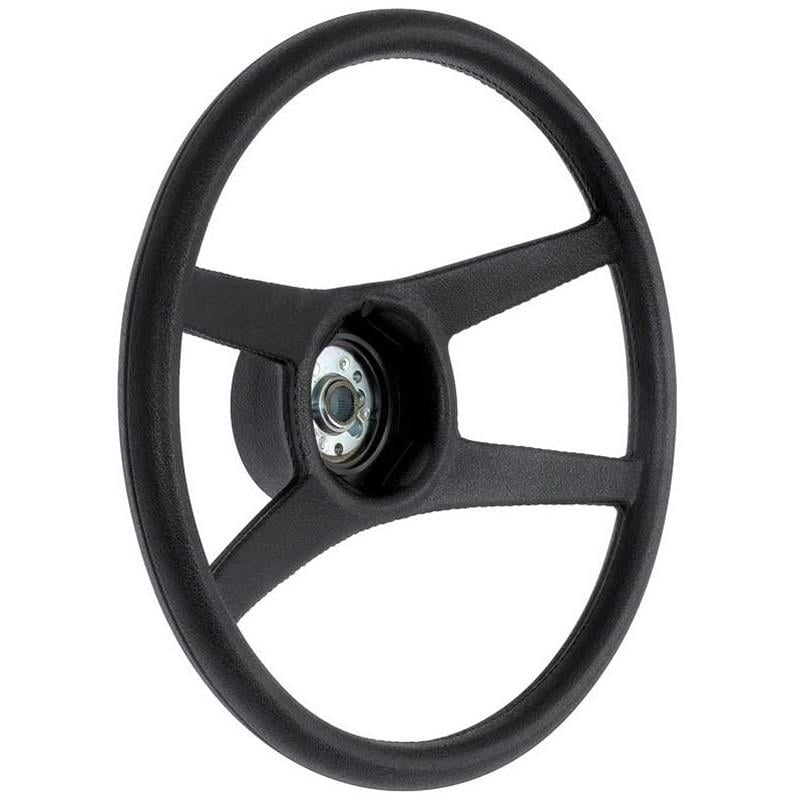
Red Flags That You Should Replace Your Steering Wheel
If you didn't notice, none of the above steering problems actually stem from a faulty steering wheel. This is because steering wheel replacement is not a common repair.
More often than not, issues arise from the interconnected components such as the steering gear, suspension system, or power steering pump. However, that doesn't mean steering wheel issues don't exist.
In rare cases, you might encounter a few red flags indicating it's time to replace your steering wheel for safety reasons:
- Excessive Wear & Tear/Visible Damage: Over time, steering wheels can show signs of excessive wear and tear, such as peeling or discoloration. While aesthetics aren’t a safety concern per se, if the steering wheel is cracked, has broken spokes, or shows signs of significant wear and tear, it may compromise your grip and control.
- Unresponsive, Loose, or Wobbly Steering Wheel: If your steering wheel is less responsive, loose, or wobbly, you have a serious safety concern. It might mean the steering column or the steering wheel itself is damaged, or there’s a problem with the connection between the two. This is not a common issue but one that requires immediate attention.
- Non-Functional Controls: If the buttons or switches on your steering wheel stop working, like cruise control, volume, phone functions, etc., and troubleshooting attempts don’t work, you may have to replace the steering wheel to restore their functionality.
If you encounter any of these red flags, you should consider consulting a professional mechanic to determine if a steering wheel replacement is necessary.
How To Replace Your Steering Wheel
Replacing a steering wheel may sound like a daunting task, but with the right tools and a bit of patience, it's ultimately not that difficult.
Just note that if your vehicle has front passenger airbags, a safety feature made standard beginning in 1998, it's best to have a professional perform the replacement to prevent accidental activation of the airbag.
Below we'll share a basic replacement guide that you can use for vehicles not equipped with front passenger airbags:
- Collect the Needed Tools: Before you start, gather all the necessary tools. You'll typically need a flathead screwdriver, a socket wrench set, and a steering wheel puller.
- Disconnect the Battery: The first step in any electrical-related repair should always be to disconnect the battery. This prevents accidental electrical discharge or short circuits.
- Remove the Horn or Center Cap: Most steering wheels will have a horn button or a center cap that can be gently pried off with the flathead screwdriver to reveal the center nut. If you’re unsure, be sure to confirm with the manufacturer's instructions in a repair manual.
- Loosen and Remove the Center Nut: First, ensure the steering wheel is centered with the front wheels and mark the position on the steering column's center shaft, which is often splined. With this alignment marked, use the appropriate-sized socket to loosen and remove the center nut. Keep track of this nut, as you'll need it later when securing the new steering wheel.
- Use a Steering Wheel Puller: With the center nut removed, you can use the steering wheel puller to remove the steering wheel from the steering column.
- Install the New Steering Wheel: Line up the new steering wheel with the steering column and push it onto the shaft. Then, replace the center nut and tighten it to the recommended torque (found in your vehicle's service manual). Then, confirm the steering wheel is centered with the front wheels.
- Reconnect the Horn or Center Cap: Once the new wheel is secure, you can reconnect the horn or center cap.
- Reconnect the Battery: Finally, reconnect the battery, start your vehicle, and test your new steering wheel to make sure it's correctly installed and responsive.
When considering the above steps, note that every vehicle is different, so be sure to consult your owner's manual or a professional mechanic if you're unsure at any point.

JEGS: Steering You in the Right Direction for All Your Automotive Needs
You should now be fully equipped to diagnose any steering issues you’re experiencing and track down the solution. Regardless of whether the fix involves adding more power steering fluid or entirely replacing the steering wheel, JEGS has your back with our wide assortment of quality steering components.
Still have questions? Contact our team today.

